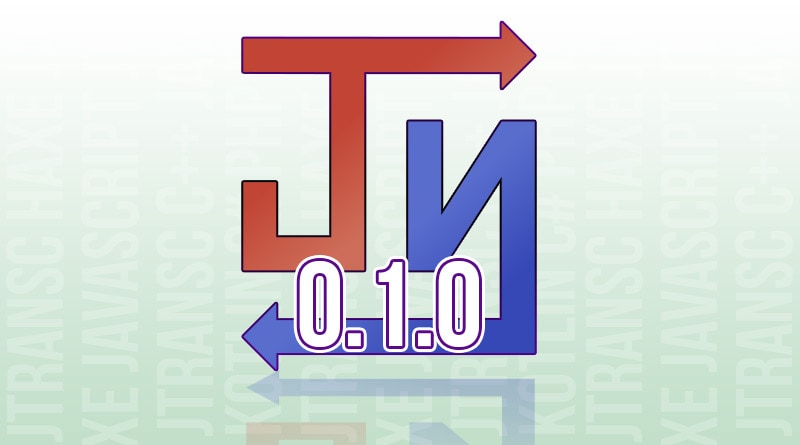
JTransc 0.1.0 and new annotations
JTRANSC RELEASE
February 24, 2016

I have just released version 0.1.0. And it will be soon at maven central.
This version decouples media library from core to the optional library jtransc-media. Also enables partial haxe interoperability and has lots of cleanups and simplifications. Now there are no hardcoded haxe mappings anywhere (replacements of java functions from haxe functions) so it is more extensible and easier to work with.
Now there are some more annotations that you can use in JTransc.
@HaxeMethodBody
This annotation replaces the java or kotlin method body when targetting haxe with jtransc. So when calling from java it will run the java body, but when compiling with jtransc it will use the code embedded in the string. In haxe body parameters are named like: p0, p1, p2, p3… Not keeping original names. Also haxe strings need to be wrapped HaxeNatives.str transforms an haxe String into a java one, and HaxeNatives.toNativeString for the reversal. You can find HaxeNatives.hx`` here, also you can examine generated code to understand the ABI.
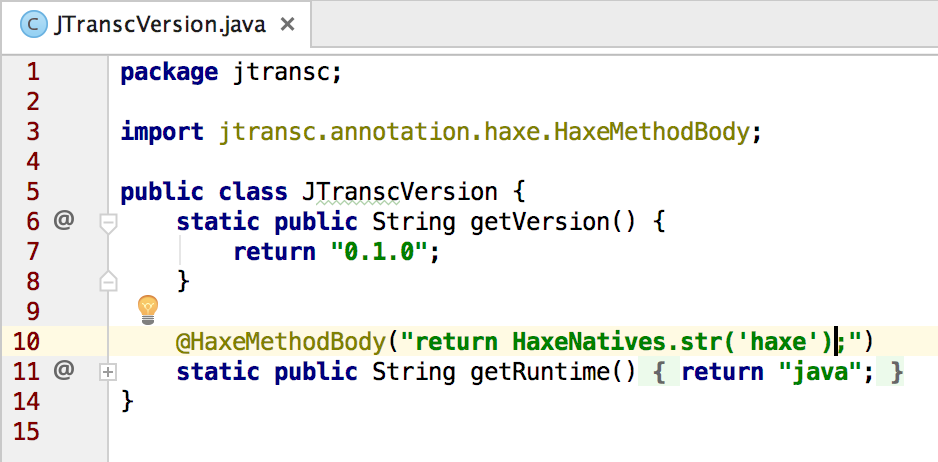
@HaxeRemoveField and @HaxeAddMembers
When creating custom haxe classes, we can use @HaxeRemoveField in order to remove a field from class when no required. Also if we need add custom members (fields or methods) to the generated class, we can use @HaxeAddMembers annotation. This allows to create code that works in java but that have an optimized version in generated haxe code.
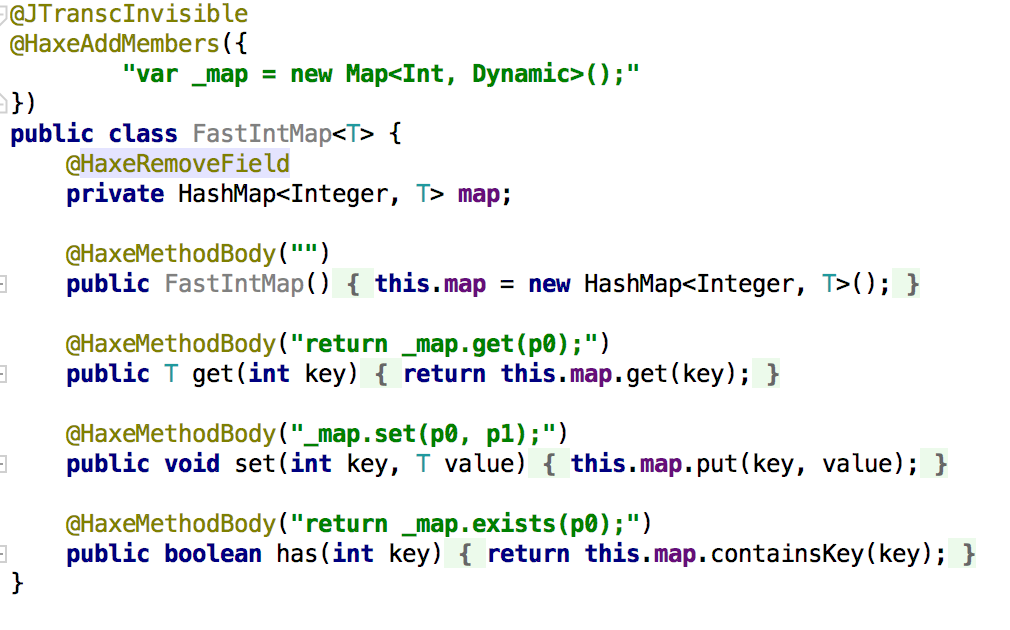
@HaxeCustomMain, @HaxeAddFiles and @HaxeAddLibraries
In order to support complex code, we have three more annotations. If the class is referenced in your project’s working class tree.
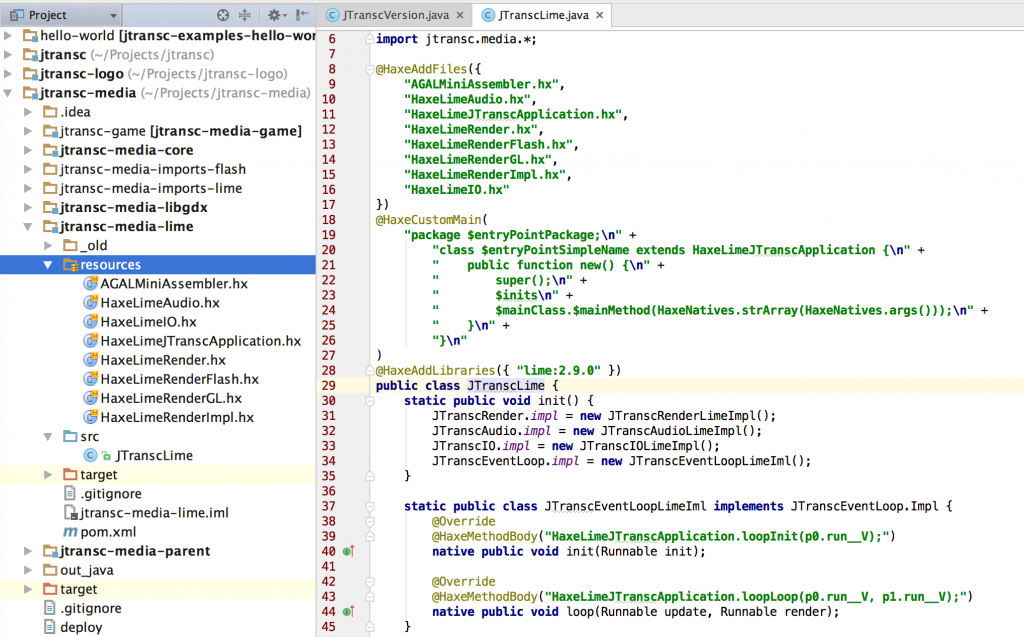
@HaxeCustomMain
This annotation allows you to define how your main class will be. This is a template. For example lime code requires your main class to extends lime.appApplication. Inside that string you have several variables that are replaced $entryPointPackage, $entryPointSimpleName, $inits, $mainClass, $mainMethod.
@HaxeAddFiles
This annotation allows you to include plain haxe fiels in your project. So you can reference and create complex code. In order for this to work you have to add those files into your library/program resources folder.
@HaxeAddLibraries
In order to be able to use other haxe libraries, you can use this annotation. This will add a -lib lib:version parameter when calling haxe, just in the case the class containing the annotation is referenced.
A couple of mains:
jtransc-media requires you to have a couple of mains. One called from plain java, and another compiled when using jtransc. You can see a kotlin example here:
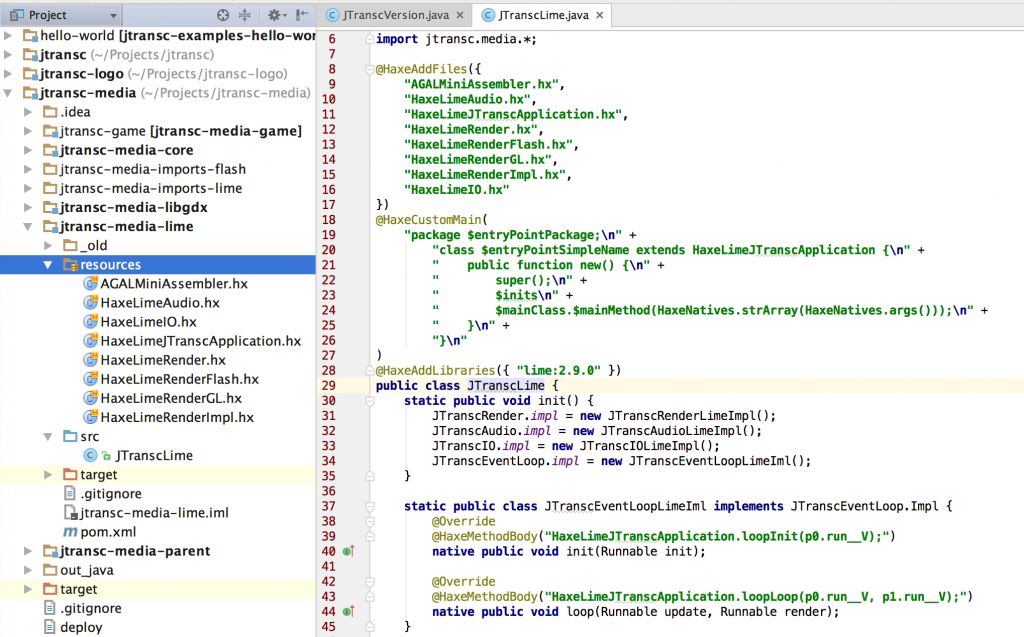
New WIP maven plugin to create library definitions
jtransc 0.1.0 is released along a new maven plugin that allows you to create a jar file with all the definitions from an haxe library. This will allow you to call custom haxe libraries.
You can see examples using it here:
jtransc-media-imports-flashjtransc-media-imports-lime
This is a WIP, but already generates valid jar files so you can see haxe classes, enums, abstracts and interfaces from java.

And that’s it. Generated code is still pretty preliminary in terms of size and quality. But still a great step.
Comments
Comments are powered by GitHub via utteranc.es.